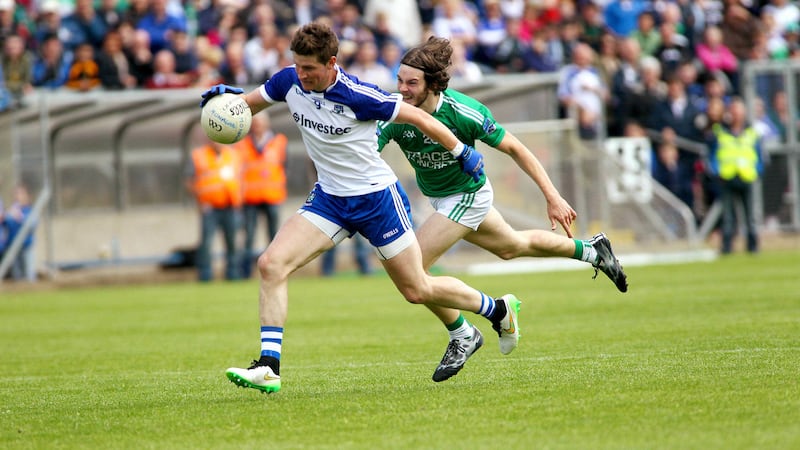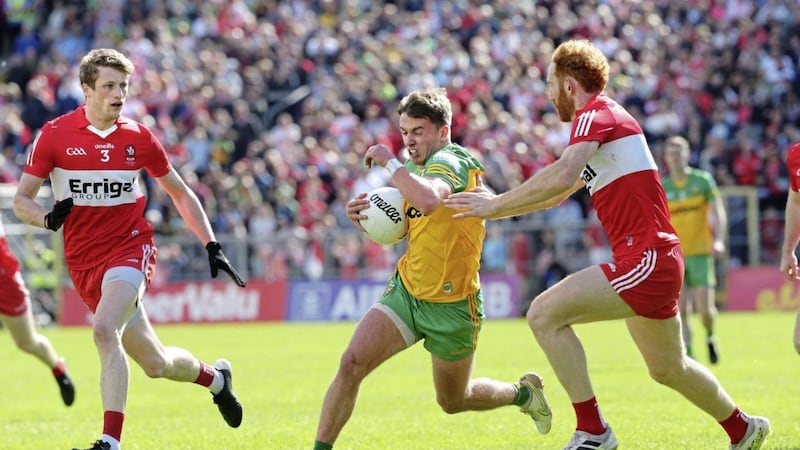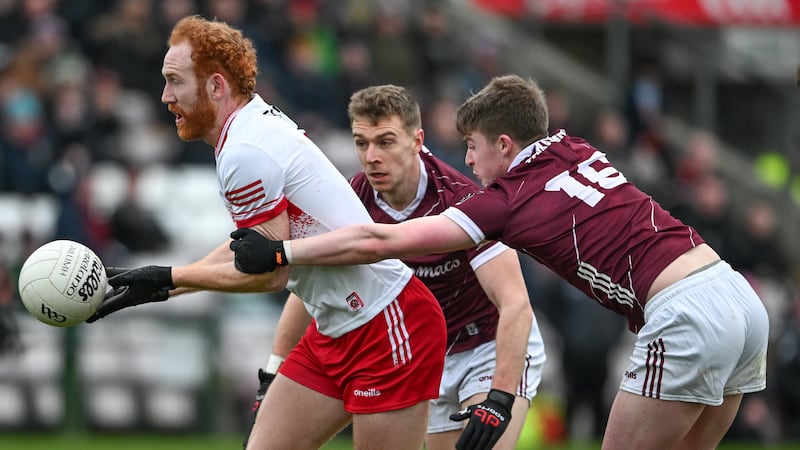THE era of the traditional midfielder is almost dead, and Monaghan’s current pairing is yet another nod towards that.
I travelled down to Clones to watch them in their National League clash with Kerry back in March and saw them struggle aerially when a big team pushed up on their kickouts.
That may yet happen again, and indeed could turn out to be a problem for them come the latter stages of the All-Ireland series.
But if they can find a way to utilise the obvious strengths of Darren Hughes and Karl O’Connell as they did against Down on Sunday, they will be hard to work with.
O’Connell has been converted into an auxiliary midfielder over the last couple of seasons, brought forward from the half-back line to try and punch holes in opposition defences.
On Sunday, he certainly did that.
He was more heavily involved in the first half than he was in the second, yet his impact on the latter was more pertinent still.
From 16 touches of the ball in the first half (one of which was from the throw-in), he was involved in five of Monaghan’s nine first half points, and set up another three scoring chances that were missed.
The Tyholland man touched the ball just 10 times in a quieter second half but from those 10 touches, Monaghan scored 1-6, including a point of his own from out on the right wing.
Overall, that’s 1-11 of their 2-22 he was involved in.
It was his diagonal ball – admittedly meant for Conor McManus before falling for Kieran Hughes – which led to the first goal that finally cracked Down, after which point the Mournemen collapsed.
He helped set up scores for Ryan McAnespie and Conor McManus in the opening moments of the second half before getting on the scoresheet himself.
Like his midfield partner, most of his plays were very simple. There was never any hint of a rash decision, as evidenced by playing a one-two with his goalkeeper to help work them out of a tight corner.
The timing and pace of his attacking runs off the shoulder made him very difficult to mark, though Down will be disappointed by how little pressure they exerted on him when he did break into their 45’.
It was certainly notable how often both O’Connell and Hughes were present in the same attack. Hughes was involved in 1-7 of Monaghan’s scores himself, and five of those were scores in which O’Connell was also involved.
You will see here that, from the very outset, they had no fear of letting both men throw the shackles off in an attempt to put Down on the back foot.
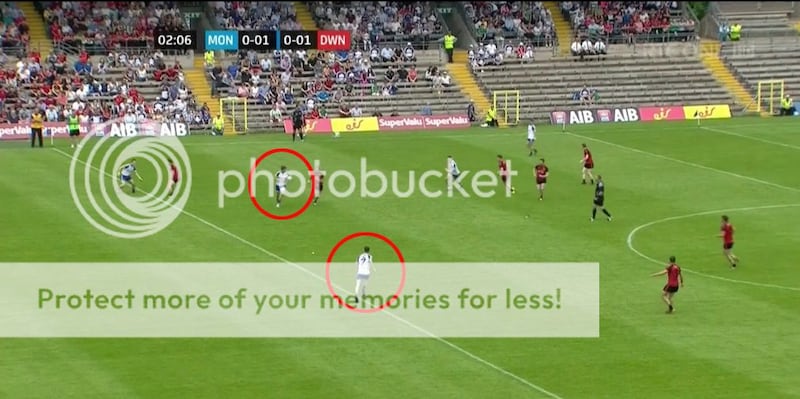
That was allowed to be effective by Down’s failure to get the ball up the pitch quickly enough, either on the counter-attack or from their own restarts. There was seldom a Down attack in which one of Hughes or O’Connell weren’t present in their own half of the field.
O’Connell’s influence was mostly in Down’s half but Hughes was to have a major impact on proceedings all over the pitch.
I would confess to not having recognised the stamp of his performance on Monaghan’s win at the time.
He was absolutely everywhere.
Scotstown’s ploy of playing him at full-forward was something Malachy O’Rourke was keen to try during the League, and may well be used at some stage in this Championship campaign.
As it was, though, his brother Kieran and Conor McManus had enough to keep the Down defence occupied and left Darren Hughes free to have maximum impact elsewhere.
He was involved 18 times in the first half and a further 17 after the break, and while he had a hand in so many scores at one end, it was the way in which he prevented scores at the other end that impressed.
Here, Down are on the attack from their own kickout. Having initially stepped up to press a potential pass, he backs away again and keeps an eye on the run of Aidan Carr through the middle.
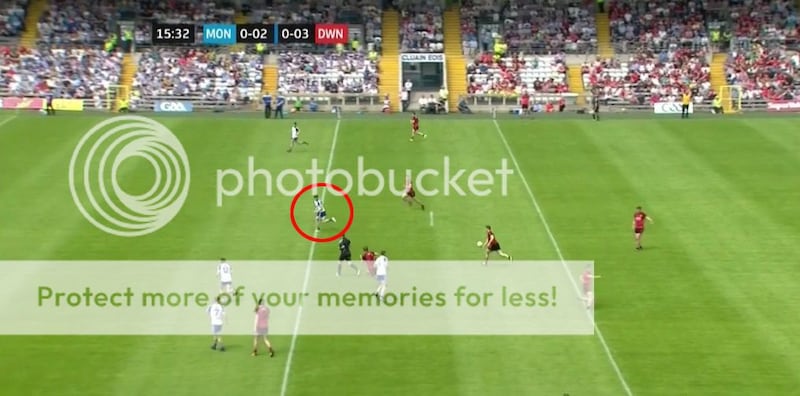
Hughes retreats inside his 45’ and then, when the moment comes, he steps out on Carr’s shot and makes the block.
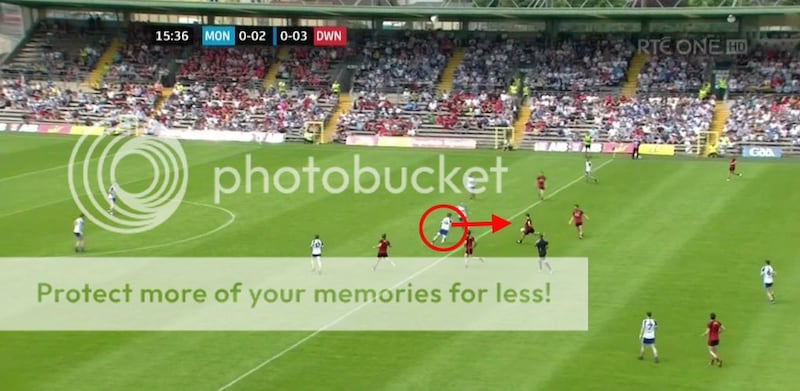
One of his scoring assists came in the form of forcing a turnover on a Down attack in first half stoppage time. His tackle is disciplined as Darren O’Hagan goes to lift the ball, almost allowing the Mourne defender to make the mistake before pinching the ball.
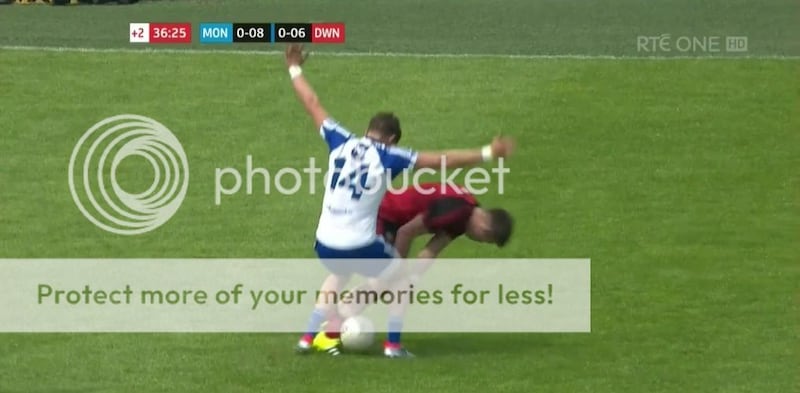
Hughes’ defensive work all afternoon was supreme, particularly in its timing. Five minutes into the second half, with the game still there for Down, they were set to purge the Monaghan cover until Hughes, from a deep position, sprang out with an interception.
The counter-attack led to Peter Turley’s black card and effectively the end of the Down challenge.
Twelve minutes from time, his reading of the game allowed him to shuffle across and pick off an almost-perfect Donal O’Hare pass as it threatened to cut Monaghan open. You see him here right in the middle of the goal on his own 21’.
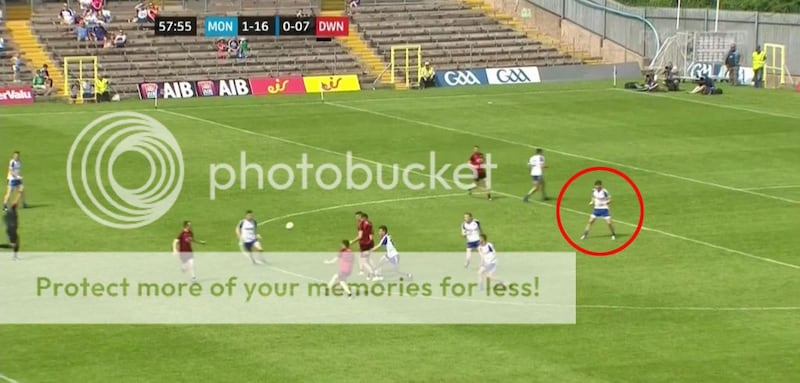
O’Hare drops the ball on to his left foot and slips it through a gap into the run of Paul Devlin, but you can see from Hughes’ body shape here that he’s already making his move towards the area where the ball is going.
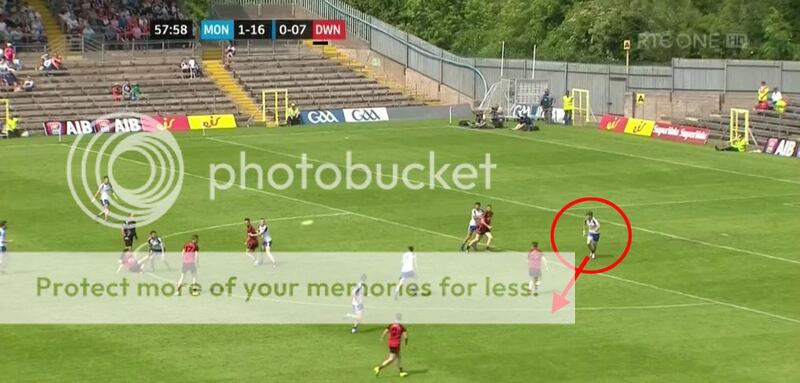
Hughes steps up to make the interception and sets Monaghan instantly on the counter-attack with a 50-yard kick pass down the line.
He certainly didn’t sit as an out-and-out sweeper though. Quite often, he would be the first man to press on the very edge of his own 45’. Here you see him in front of the cover (with Karl O’Connell just behind) making the tackle to dispossess Joe Murphy.
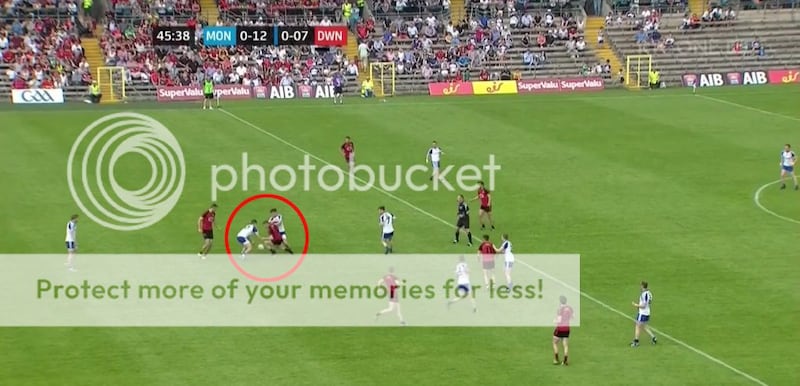
The one thing that the pair do rely on is the accuracy and width of Rory Beggan’s restarts.
In an interview in the programme, Hughes joked that his biggest strength was judging where his clubmate’s kickouts are going.
They are almost always going to the space outside one of his two midfielders. Barring the one he thumped 90 metres on to Kieran Hughes for their first score of the second half, Beggan never went down the middle. Every kick was to the wing.
The big Scotstown number one is as comfortable kicking left as he is right, and kicks off the ground rather than the tee, lowering the trajectory of his kick and favouring his own men.
That was the big difference in the kickouts from the two ends. Steven Kane rarely missed his target, but his kicks hung longer in the air and allowed Monaghan time to get across to the ball and attack it.
Monaghan’s runs to the wings were also far more prolific in the second half as the Down legs tired, and as a result, the home side lost just one of their admittedly very few second half restarts.
If they continue to get the same return out of their midfield for the rest of the season, and get closer to the norm from the unusually quiet Dessie Mone, their attacking from deep could well take the weight off Conor McManus.
